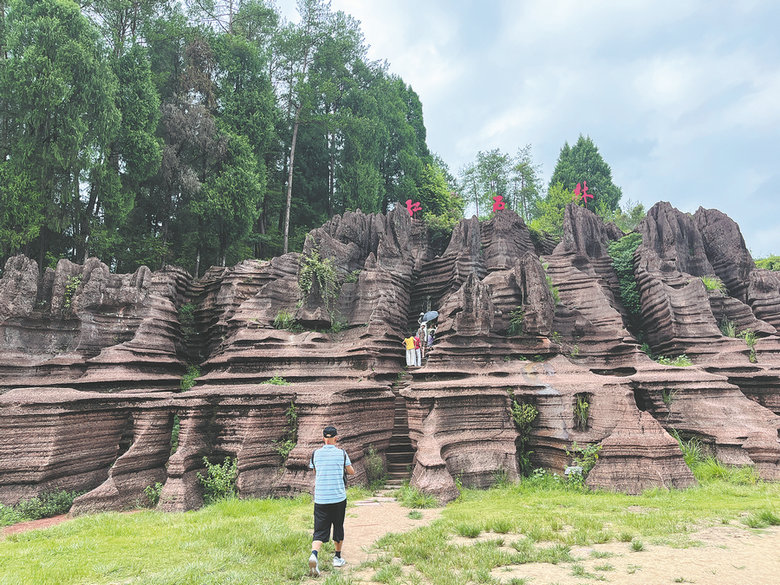Tracking a mountain of history


From the cave to the cable station, where another ride transported people back to the foot of the mountain, I had to choose between taking several more escalators or descending 999 steps by foot. Embracing an "I-didn't-come-this-far-to-quit" mentality, I decided to tackle the steps.
After safely landing the last step, I headed to a post office to send postcards to my friends. Upon hearing my story, a staff member suggested, "Why not climb back up the 999 steps? Otherwise, this will be the end of your visit to Tianmen Mountain".
Despite my clothes being soaked with sweat, my calves starting to feel sore, and the clock already reading 3 pm, I took her advice.
It took 18 minutes to ascend the 999 steps, my heart racing at 170 beats per minute. Once again, I found myself among a crowd of tourists taking photos of the view below. Though it's a beautiful sight, it inevitably paled in comparison to the breathtaking sandstone peak forests I saw the previous day.
At noon, drenched in sweat with my hair plastered to my scalp, I found myself lost. Following a throng of tourists, I climbed up and down steps that are supposed to lead to the most popular view in Zhangjiajie — the floating mountains that inspired the Hallelujah Mountains in James Cameron's 2009 blockbuster Avatar.
























